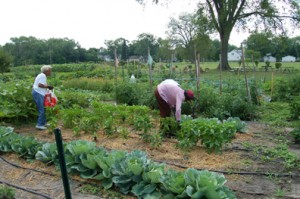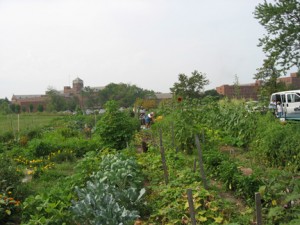When my boyfriend and I planned our Spring Break trip to Colorado the reasons were not about historic preservation or historic districts, but that is what we got to experience in so many ways.
First, we attended a family wedding held at The Stanley Hotel in Estes Park. The hotel opened in 1909 and was built by F.O. Stanley and his wife, Flora, (Stanley Steamer automobiles) when they came to Colorado because he had tuberculosis. The hotel is a member of the National Trust’s Historic Hotels of America, in 1977 was entered into the National Register of Historic Places and was later designated an Historic District as its own entity, not as a section of a town.
The rooms were furnished with beautiful antiques. The most visible upgrades of modern living were things like telephones, table lamps, the sprinkler system, the bathrooms and flat-screen TVs. We were “treated” all day everyday to watching and hearing many ghost tours passing through the lobby and hallways. At night we encountered several paranormal investigators rigged out with digital voice recorders and night vision cameras…
One morning we drove up into the Rocky Mountain National Park where we saw the location of the Little Horseshoe Camp, the first CCC Camp west of the Mississippi which housed what was called the Woodpecker Army. They rode to their work sites in red sight-seeing vehicles. In Estes Park there was a small but really interesting museum about the Stanley family, the hotel and the Steamer automobiles.
Our other Colorado destination was back down the road in Boulder. We stayed at the Hotel Boulderado which also opened in 1909, has membership in the National Trust’s Historic Hotels of America and is on the National Register of Historic Places. It is located in Boulder’s Downtown Historic District. While my boyfriend attended a conference at the University of Colorado I got to wander around a couple of Boulder’s several Historic Districts which they started designating in 1976. According to a pamphlet I read that as early as 1980 Boulder won an award from the U.S. Department of Housing and Urban Development for the urban environmental design of their pedestrian mall.
The Pearl Street pedestrian mall centers on the 1930’s Art Deco County Courthouse. In that area I noticed that all the businesses were locally owned, no chains or nationally recognized names. When I did see a Starbuck’s I realized I was in a fringe area outside of the actual Historic District. The architecture of the store fronts was not all of one era, but everything was certainly well-maintained and newer buildings were not built higher than those with historic facades. There were signs here and there with historic information, lots of benches, some sculpture, a fountain where kids could play, and a large kiosk with visitor information pamphlets.
I walked around a residential neighborhood that had some highlighted homes and churches. Again there were all different styles of architecture. The churches all appeared to have additions or extra building, many with a modern look, but blending in with the older original buildings. Many of the houses looked from the outside like single-family homes, but had 2 or more mailboxes which led me to think lots of students from the university lived in the area. One of the oldest elementary schools in Boulder was in this area. It’s still used with many additions to the back of it.
On our way out of town before heading to the airport we stopped at the Boulder Historical Museum. It’s in an old house that was originally a vacation home for a family from the East Coast. It was fun to walk through and think about some of our discussions about museums. Their display on Native Americans started with the coming of white people. They had some very hands on exhibits about mining, but sparse explanations about how some of the equipment was used. Then in the next room it was totally hands OFF where the telephone switchboard, old radio and gramophone were concerned.
One thing I really liked especially about the Downtown Historic District of Boulder was that people did seem to realize what a treasure they had. All the people I talked to in stores, restaurants and the hotel seemed incredibly proud to work in such a unique part of their town.

